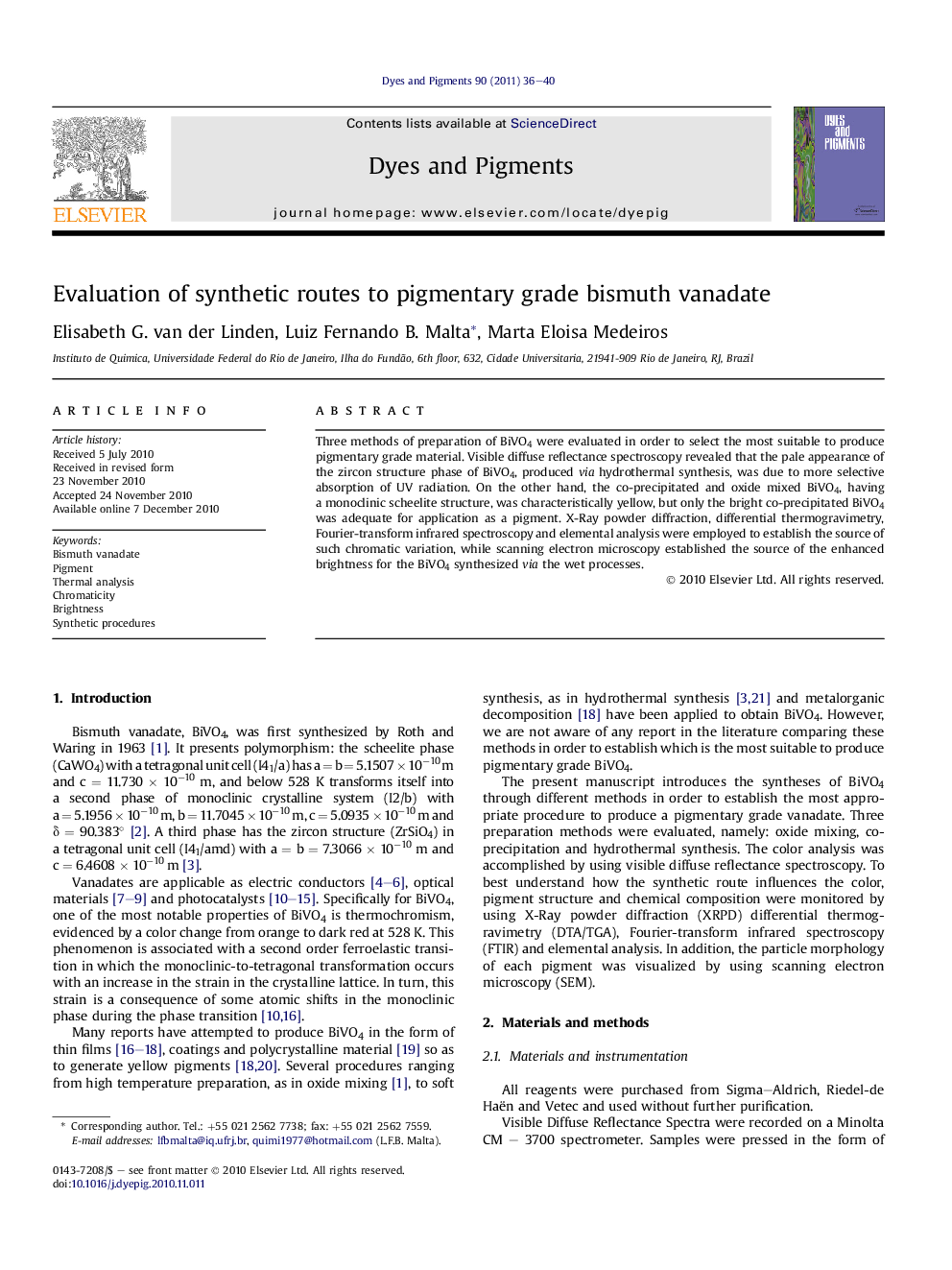| Article ID | Journal | Published Year | Pages | File Type |
|---|---|---|---|---|
| 177293 | Dyes and Pigments | 2011 | 5 Pages |
Three methods of preparation of BiVO4 were evaluated in order to select the most suitable to produce pigmentary grade material. Visible diffuse reflectance spectroscopy revealed that the pale appearance of the zircon structure phase of BiVO4, produced via hydrothermal synthesis, was due to more selective absorption of UV radiation. On the other hand, the co-precipitated and oxide mixed BiVO4, having a monoclinic scheelite structure, was characteristically yellow, but only the bright co-precipitated BiVO4 was adequate for application as a pigment. X-Ray powder diffraction, differential thermogravimetry, Fourier-transform infrared spectroscopy and elemental analysis were employed to establish the source of such chromatic variation, while scanning electron microscopy established the source of the enhanced brightness for the BiVO4 synthesized via the wet processes.
Research highlights► Three methods of preparation were evaluated to produce a pigmentary grade BiVO4. ► Each method afforded particular structure, morphology and composition of BiVO4. ► Therefore it resulted in a specific colour property for each sample. ► The conclusion was that solely the co-precipitated BiVO4 exhibited a pigmentary grade.
